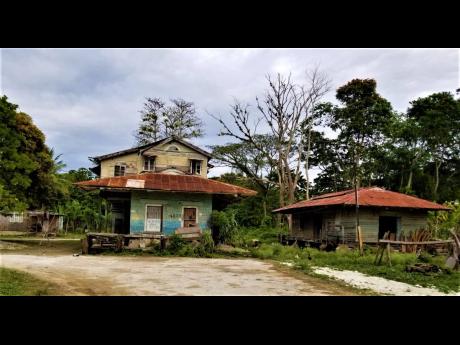Montpelier Railway Station, St James
As unlikely as it seems, the building in this photograph was once the bustling train station of Montpelier in St James. It was the hub for connecting parts of Hanover and Westmoreland with towns across Jamaica. May Pen, Mandeville, Spanish Town, Kingston, Port Antonio, and many others.
In the early 19th century, Montpelier was one of the largest sugar plantations in western Jamaica. After the collapse of slavery and the sugar industry, cattle breeding and later, the cultivation of oranges became the main occupation in Montpelier. A great house once stood across the road from the railway station, and Montpelier was one of the sugar estates that were burnt down during slave rebellions in western parishes between 1831 and 1832.
But back in the 1970s, the Morris Oxfords, the Austin Cambridges, the Anglias and the Ford Capris would pull up right in the foreground of this photograph to let off or pick up passengers. There were no online schedules back then, but everyone knew when the diesel, and the slower, cheaper train were departing and arriving. First-and second-class services were offered, but not all stations had first-class waiting lounges, and the seats in them were just as tough as in the regular waiting area.
HEAVY USAGE
The train service, offered lots of cargo space and produce from Balaclava, Catadupa, Maggotty, and Williamsfield, and oranges from Porus could easily make it to Kingston markets. Students, too, were heavy users of the railway, some using it once or twice per term and others using it daily at stops like Frankfield and Gregory Park to get to school. And if you boarded at Montpelier, after the four-hour ride to Kingston, you could grab a Yellow Cab (67444) or Checker Cab (67535) from the station at Barry Street to take you to your final destination.
There was no passenger railway service in Hanover, Westmoreland, Trelawny, St Ann or St Thomas, but St Ann had bauxite trains. The importance of the railway service quickly diminished in the late 1970s when the use of minibuses became popular across Jamaica.

